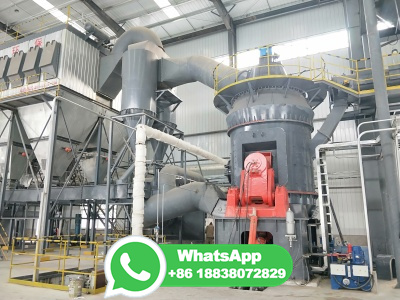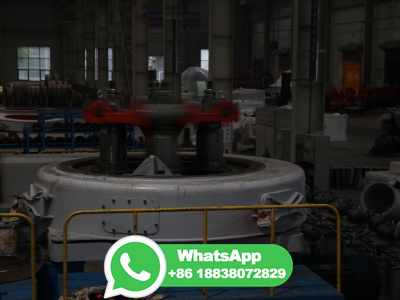
WEBManufacturing Process Extraction of Limestone. ... This is the process where the limestone is heated to a temperature above 1,472ºF for decarbonation,, removal of carbon dioxide in gaseous form, to produce quicklime. Almost half of the limestone's weight is lost as carbon dioxide. The kiln contains entry points for fuel, air, and the ...
WhatsApp: +86 18203695377
WEBJul 10, 2023 · The cement manufacturing process involves the extraction and processing of raw materials, such as limestone, clay, and shale, which are then heated in a kiln at high temperatures to form clinker. ...
WhatsApp: +86 18203695377
WEBDec 14, 2018 · The Cement Manufacturing Process. Cement is created by heating crushed limestone with clay, slate, blast furnace slag and other materials, then cooling and grinding the resultant clinker to create a fine powder. Most modern cement plants use a dry process which is more thermally efficient than the older wet process.
WhatsApp: +86 18203695377
WEBJan 20, 2016 · A production line is composed of three processing stages, and each stage is composed of several units (Fig. 5). In each unit's material flow structure, the flow rate and flow direction are varied. In the production process, material consumption needs to be investigated at every point, and a large number of measurements are taken.
WhatsApp: +86 18203695377
WEBThe Solvay process or ammonia–soda process is the major industrial process for the production of sodium carbonate (soda ash, Na 2 CO 3).The ammonia–soda process was developed into its modern form by the Belgian chemist Ernest Solvay during the 1860s. The ingredients for this are readily available and inexpensive: salt brine (from inland sources .
WhatsApp: +86 18203695377
WEBThe most important raw materials for making cement are limestone, clay, and marl. These are extracted from quarries by blasting or by ripping using heavy machinery. ... This is why the whole production process is monitored and controlled from a central control room where all the data from the plant and the laboratory come together. Highly ...
WhatsApp: +86 18203695377
WEBJan 9, 2024 · The cement production process emits approximately tons of CO 2 per ton of cement (Hasanbeigi et al. 2010), accounting for about 5–8% of global CO 2 emissions and ranking as the secondlargest CO 2 emissions source (Mikulčić et al. 2016; Kajaste and Hurme 2016).According to the Intergovernmental Panel on Climate Change .
WhatsApp: +86 18203695377
WEBJun 19, 2015 · It describes the typical materials used to make glass sand, soda ash, and limestone. The manufacturing process is also summarized, including melting the materials in a furnace at 1500 degrees C, forming gobs, and using either a blow and blow or press and blow process to form bottles or jars in molds. The blow and blow process is .
WhatsApp: +86 18203695377
WEBJul 17, 2020 · Lime is a versatile chemical with many uses. It is vital in the production of countless materials. Lime, or calcium oxide (CaO), is derived from high quality natural deposits of limestone, or calcium carbonate (CaCO3). Limestone is a sedimentary rock that formed millions of years ago as the result of the accumulation of shell, coral, algal, .
WhatsApp: +86 18203695377
WEBLimestone is the raw material for production of lime, primarily known for treating soils, purifying water and smelting copper. Lime is an important ingredient used in chemical industries. [110] Limestone and (to a lesser extent) marble are reactive to acid solutions, making acid rain a significant problem to the preservation of artifacts made ...
WhatsApp: +86 18203695377
WEBCement Production Process and Reactions. Each step of cement manufacturing, physical conditions and reactions occurred are explained here. Raw material transportation. Limestone is carried to the plant from mining place usually by a train. Some cement plants import clinker from other country or plant and add gypsum to produce cement.
WhatsApp: +86 18203695377
WEBLimestone is a sedimentary rock composed primarily of calcite, a calcium carbonate mineral with a chemical composition of CaCO 3. It usually forms in clear, calm, warm, shallow marine waters. Limestone is usually a biological sedimentary rock, forming from the accumulation of shell, coral, algal, fecal, and other organic debris.
WhatsApp: +86 18203695377
WEBSteelmaking. Steel mill with two arc furnaces. Steelmaking is the process of producing steel from iron ore and/or scrap. In steelmaking, impurities such as nitrogen, silicon, phosphorus, sulfur and excess carbon (the most important impurity) are removed from the sourced iron, and alloying elements such as manganese, nickel, chromium, carbon and ...
WhatsApp: +86 18203695377
WEBSep 17, 2017 · MANUFACTURING PROCESS OF AAC BLOCK. Anurag Wahane 1. Civil Department, Columbia Institute of Engineering Technology, Raipur, (India) ABSTRACT. AAC blocks are light weight Aerated Autoclave ...
WhatsApp: +86 18203695377
WEBPart One: Raw Material Preparation. General. The production of cement is started from quarrying the raw material. The main raw materials are limestone, basalt, sand stone, pumice, gypsum. Site Exploration of suitable deposits, for the raw material has three main aims:. Verifying the quality of the raw materials.
WhatsApp: +86 18203695377
WEBHow Cement is Made. Cement is made from common materials such as limestone, clay, silica, and iron ore that are blended together. Click on the circles above and tour Continental Cement's Hannibal plant to view the cement making process. For a more detailed description of the cement manufacturing process, visit Portland Cement Association's ...
WhatsApp: +86 18203695377
WEBThe glass most people are familiar with is sodalime glass, which is a combination of soda (also known as soda ash or washing soda), limestone, and sand. Although you can make glass simply by heating and then rapidly cooling silica, the manufacturing of sodalime glass is a little more complex. By adding soda (sodium carbonate), the melting ...
WhatsApp: +86 18203695377
WEBMay 9, 2012 · The production of cement releases greenhouse gas emissions both directly and indirectly: the heating of limestone releases CO 2 directly, while the burning of fossil fuels to heat the kiln indirectly results in CO 2 emissions. The direct emissions of cement occur through a chemical process called calcination.
WhatsApp: +86 18203695377
WEBOct 1, 2022 · The thermal treatment of limestone (mainly CaCO 3) to produce lime (CaO) is a major contributor to CO 2 emissions and the literature on decarbonising the lime industry is scarce. Subsequent hydration of lime would lead to the synthesis of slaked/hydrated lime Ca(OH) 2; the production of a tonne of Ca(OH) 2 emits ∼ .
WhatsApp: +86 18203695377
WEBThe UNE 36001 norm includes the following classifiion of steel products: Irons, steels, foundry or pigiron, ferroalloys, ferrous aggregates and special ferric worth highlighting is steel, a very versatile material that accounts for 80% of metal production and which is obtained by mixing Iron (Fe) and Carbon (C).The carbon content in steel .
WhatsApp: +86 18203695377
WEBDec 10, 2019 · A novel limestone calcination process with looping CO 2 as heat carrier is proposed. • About 780 kg CO 2 can be recovered per ton of lime manufacturing. • More alternative fuels can be used in the new process to reduce the operating cost. • The P CO2 /P CO2 eq is suggested to be below to achieve efficient calcination. •
WhatsApp: +86 18203695377
WEBJan 1, 2022 · In the cement manufacturing process, limestone, shale and clay are ready, dried, crushed, blended and heated in cement ovens up to 1200° C–1450° C to produce the clinker. A high temperature is needed for chemical reactions to occur in the burning region. A nodular substance called a clinker is formed and is then allowed to leave the oven.
WhatsApp: +86 18203695377
WEBFeb 22, 2022 · Quarrying the primary raw materials, mostly limestone, clay, and other components, is the first step in the manufacturing process. Step 2: Crushing. After quarrying, the rock is crushed. There are several stages to this process. Initially, the rock is crushed to a maximum size of about 6 inches.
WhatsApp: +86 18203695377
WEBMay 1, 2009 · The manufacturing process is very complex, involving a large number of materials (with varying material properties), pyroprocessing techniques (, wet and dry kiln, ... Their results indie that while the limestone blend concrete examined might be more environmentally friendly on a mass by mass basis, more of the blended limestone .
WhatsApp: +86 18203695377
WEBLimestone also helps to improve the handling and formability of the molten glass. In a pure silica melt, viscosity is high and this (alongside with high temperature) makes the glass difficult to shape, especially when it needs to hold a form, for example, in the production of glass containers. Limestone reduces the viscosity, making the liquid ...
WhatsApp: +86 18203695377
WEBDec 1, 2022 · The main constituents of Portland cement blamed for CO 2 emissions are limestone and other claylike materials, as shown in, which are superheated to 1400 °C before being ground into a lumpy solid substance (clinker) in the calcination process [45], [53], [54], [55]. Superheating limestone leads to the direct release of CO 2 into the ...
WhatsApp: +86 18203695377
WEBAug 30, 2012 · Cement Manufacturing Process Phase II: Proportioning, Blending Grinding. The raw materials from quarry are now routed in plant laboratory where, they are analyzed and proper proportioning of limestone and clay are making possible before the beginning of grinding. Generally, limestone is 80% and remaining 20% is the clay.
WhatsApp: +86 18203695377
WEBLimestone Manufacturing is a leading manufacturing facility that offers comprehensive services from design and product development to producing complete parts and assemblies. ... We prioritize quality at every step of the manufacturing process, ensuring that our products meet the highest standards and satisfy the customer. To prove this we .
WhatsApp: +86 18203695377
WEBProduction Process. We source our limestone, pozzolans and clay primarily from ALQC and IQAC. We also source raw materials, including limestone, clay, pozzolans and gypsum, from third parties both in the Philippines and from abroad. These raw materials are delivered from the quarry to our crushing facilities on trucks that we lease from third ...
WhatsApp: +86 18203695377